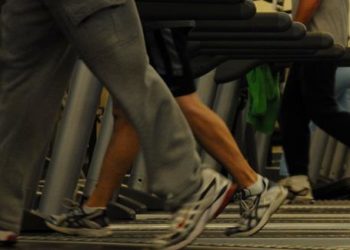Certain financial incentive programs may promote increased physical activity
1. In a randomized control trial, monetary loss-incentive design resulted in a significantly greater proportion of participants reaching their physical activity goal during the intervention period, compared to control group.
2. A daily positive monetary incentive for reaching goal or lottery eligibility equivalent had no significant effect on the proportion reaching the physical activity goal.
Evidence Rating Level: 1 (Excellent)
Study Rundown: Recently, the Affordable Care Act increased the percentage of insurance premiums that employers may direct toward financial incentives for health promotion programs. This study sought to understand how best to frame financial-incentives for such programs. All participants of this study were given the goal of walking 7000 steps per day during the first 13 weeks of the intervention, but also had their steps recorded for an additional 13 weeks of follow-up. For the intervention, participants were randomized to receive daily feedback alone (control group) or feedback with 1 of 3 types of incentive types, including a monetary gain if they met the daily goal, lottery eligibility, or a loss incentive for each day they failed to meet their goal. The proportion reaching daily goal during the intervention period was significantly greater in the loss-incentive group compared to the control group. The loss-incentive group also had no significant difference in proportion meeting goal during the follow-up period and had no significant effect on mean daily steps during either period. The gain-incentive and lottery-incentive designs showed no significant difference from the control group during either period with regard to proportion reaching goal or mean daily steps. The major limitations of this study were the low overall percentage of participants achieving the daily goal goal and the large amount of missing data that ranged from 10-18% during the intervention. Overall, the loss-incentive type system was the most effective in promoting physical activity goals.
Click to read the study published today in the Annals of Internal Medicine
Relevant Reading: A randomized study of financial incentives to increase physical activity among sedentary older adults
In-Depth [randomized controlled trial]: This study randomized 281 overweight or obese (BMI ≥27) employees of a single hospital to receive daily feedback alone (control group, n = 70) or feedback with 1 of 3 types of incentives; daily gain of $1.40 if they met the goal (n = 69), lottery eligibility (approx. $1.40/day) (n = 70) or loss incentive (allot $42/month with $1.40/day deducted if they failed to meet goal) (n = 70). The mean steps walked per day during the intervention (Weeks 1-13) were 5031, 5406, 5251 and 5888, and during the follow-up (Weeks 14-26) were 4539, 4692, 4529 and 5065 for the control, gain-incentive, lottery-incentive and loss-incentive groups, respectively. The proportion reaching daily goal during intervention were 0.30, 0.35, 0.36 and 0.45, (loss-incentive vs control difference 0.16; p = 0.001) and during the follow-up were 0.24, 0.25, 0.23 and 0.30 for the control, gain-incentive, lottery-incentive and loss-incentive groups, respectively. Over 95% of participants completed the 13-week intervention and 92% completed the full 26 weeks.
Image: PD
©2016 2 Minute Medicine, Inc. All rights reserved. No works may be reproduced without expressed written consent from 2 Minute Medicine, Inc. Inquire about licensing here. No article should be construed as medical advice and is not intended as such by the authors or by 2 Minute Medicine, Inc.









